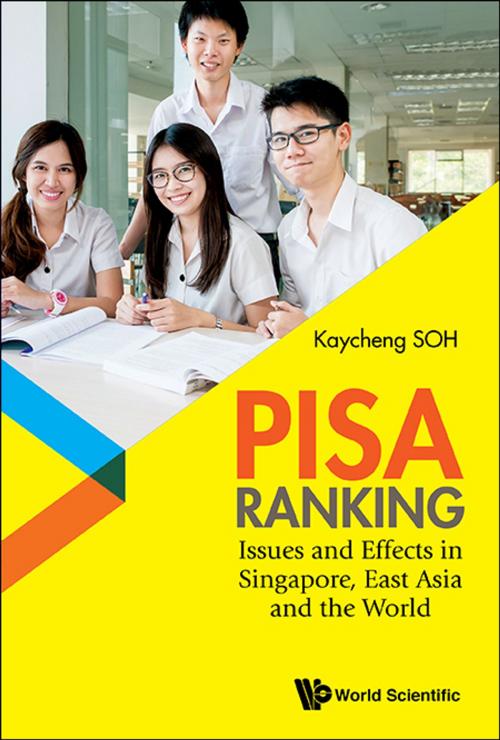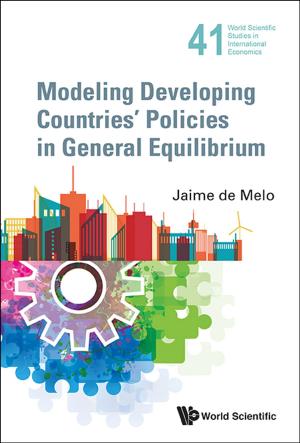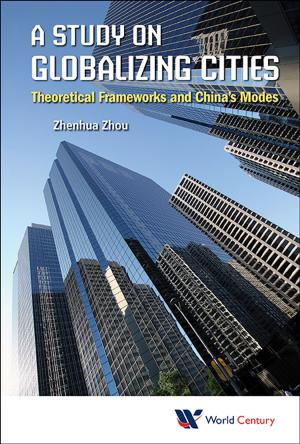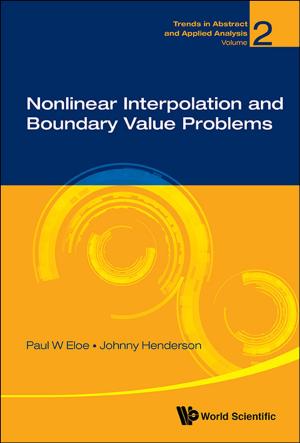PISA Ranking
Issues and Effects in Singapore, East Asia and the World
Nonfiction, Reference & Language, Education & Teaching| Author: | Kaycheng Soh | ISBN: | 9789813200746 |
| Publisher: | World Scientific Publishing Company | Publication: | March 14, 2017 |
| Imprint: | WSPC | Language: | English |
| Author: | Kaycheng Soh |
| ISBN: | 9789813200746 |
| Publisher: | World Scientific Publishing Company |
| Publication: | March 14, 2017 |
| Imprint: | WSPC |
| Language: | English |
The OECD's Programme for International Student Assessment (PISA) is gaining increasing attention among education authorities of the world. The number of participating economies almost doubled in the past one and a half decades, increasing from 43 in 2000 when it first started to 74 in 2015. PISA assesses the performance in Reading, Mathematics, and Science of 15-year-olds with different emphases rotating among the three subjects in different exercises.
The attention of the participating economies has been focused almost exclusively on the ranking results which are used to evaluate the standings and progress of their education systems, although PISA does cover many background conditions which might have influenced the performance. Interestingly, East Asian economies have been consistently in the leading positions, and Finland has been frequently cited as a model for the Western economies and even the world to emulate.
This monograph contains many secondary analyses of PISA data. It presents results of comparisons of Singapore, East Asian economies, and the world. It also points up some influencing factors such as time in and after school, test-language effect, administrative styles, and school environment. Statistical and measurement issues are also raised and demonstrated. Moreover, cultural differences are evoked as a plausible explanation of the differences observed between the East and the West.
This monograph, using mainly simple and layman language, equips educational administrators and policy makers with in-depth insights into some of the intricacies inherent in the PISA data for a more appropriate understanding. It is readily appreciated that such an understanding is needed to prevent misinterpretation and avoid unsound policy or wasteful action.
Contents:
- Prologue
- Singapore's Education in World Rankings: School and Higher Education and Beyond
- Fifteen-Years-Old Students of Seven East Asian Cities in PISA 2009: A Secondary Analysis
- Why Do East Asian Students Do Well in PISA? A Cultural Explanation
- Education Systems of Finland and Singapore Compared: Achievement, School Leadership, and Culture
- Social Environments for Learning in Finland and Singapore: Perceptions of Students and Principals in PISA 2009
- Finland and Singapore in PISA 2009: Similarities and Differences in Achievements and School Management
- After-School Lesson but Not Homework Pays Off for East Asian Countries: Evidence from PISA 2009
- Is Time NOT Always a Factor of Achievement? A Lesson from Reanalyzing PISA Data
- Score-Rank Inconsistency in International Ranking: An Example from PISA 2009–2012
- Singapore's Resilient Students in PISA 2009
- Are All the Differences Really Different? Spurious Precision in PISA 2009 Ranking
- Interest and Achievement in PISA 2012 Mathematics: An Ecological Fallacy?
- Shouldn't PISA Rank the Countries Three Times? Test Language Effect Revisited
- Spurious Precision, an Interpretation Problem in International Studies: Examples of the PISA 2009
- All that Glitter are Not Gold: Highlights of Criticisms on PISA
- Readability of PISA Reading Tasks as a Predictor of Reading Performance
- Surprising Negative Correlations between PISA 2009 Reading and Learning Environment
- Epilogue
Readership: Teachers, school leaders, professionals involved with education, educational administrators, policy makers and general readers interested in interpreting international ranking results.
Key Features:
- It discusses the issues using simple layman language
- The re-analyses enable a fresh look at the PISA results
- It points up some hitherto un-noticed effects
The OECD's Programme for International Student Assessment (PISA) is gaining increasing attention among education authorities of the world. The number of participating economies almost doubled in the past one and a half decades, increasing from 43 in 2000 when it first started to 74 in 2015. PISA assesses the performance in Reading, Mathematics, and Science of 15-year-olds with different emphases rotating among the three subjects in different exercises.
The attention of the participating economies has been focused almost exclusively on the ranking results which are used to evaluate the standings and progress of their education systems, although PISA does cover many background conditions which might have influenced the performance. Interestingly, East Asian economies have been consistently in the leading positions, and Finland has been frequently cited as a model for the Western economies and even the world to emulate.
This monograph contains many secondary analyses of PISA data. It presents results of comparisons of Singapore, East Asian economies, and the world. It also points up some influencing factors such as time in and after school, test-language effect, administrative styles, and school environment. Statistical and measurement issues are also raised and demonstrated. Moreover, cultural differences are evoked as a plausible explanation of the differences observed between the East and the West.
This monograph, using mainly simple and layman language, equips educational administrators and policy makers with in-depth insights into some of the intricacies inherent in the PISA data for a more appropriate understanding. It is readily appreciated that such an understanding is needed to prevent misinterpretation and avoid unsound policy or wasteful action.
Contents:
- Prologue
- Singapore's Education in World Rankings: School and Higher Education and Beyond
- Fifteen-Years-Old Students of Seven East Asian Cities in PISA 2009: A Secondary Analysis
- Why Do East Asian Students Do Well in PISA? A Cultural Explanation
- Education Systems of Finland and Singapore Compared: Achievement, School Leadership, and Culture
- Social Environments for Learning in Finland and Singapore: Perceptions of Students and Principals in PISA 2009
- Finland and Singapore in PISA 2009: Similarities and Differences in Achievements and School Management
- After-School Lesson but Not Homework Pays Off for East Asian Countries: Evidence from PISA 2009
- Is Time NOT Always a Factor of Achievement? A Lesson from Reanalyzing PISA Data
- Score-Rank Inconsistency in International Ranking: An Example from PISA 2009–2012
- Singapore's Resilient Students in PISA 2009
- Are All the Differences Really Different? Spurious Precision in PISA 2009 Ranking
- Interest and Achievement in PISA 2012 Mathematics: An Ecological Fallacy?
- Shouldn't PISA Rank the Countries Three Times? Test Language Effect Revisited
- Spurious Precision, an Interpretation Problem in International Studies: Examples of the PISA 2009
- All that Glitter are Not Gold: Highlights of Criticisms on PISA
- Readability of PISA Reading Tasks as a Predictor of Reading Performance
- Surprising Negative Correlations between PISA 2009 Reading and Learning Environment
- Epilogue
Readership: Teachers, school leaders, professionals involved with education, educational administrators, policy makers and general readers interested in interpreting international ranking results.
Key Features:
- It discusses the issues using simple layman language
- The re-analyses enable a fresh look at the PISA results
- It points up some hitherto un-noticed effects















